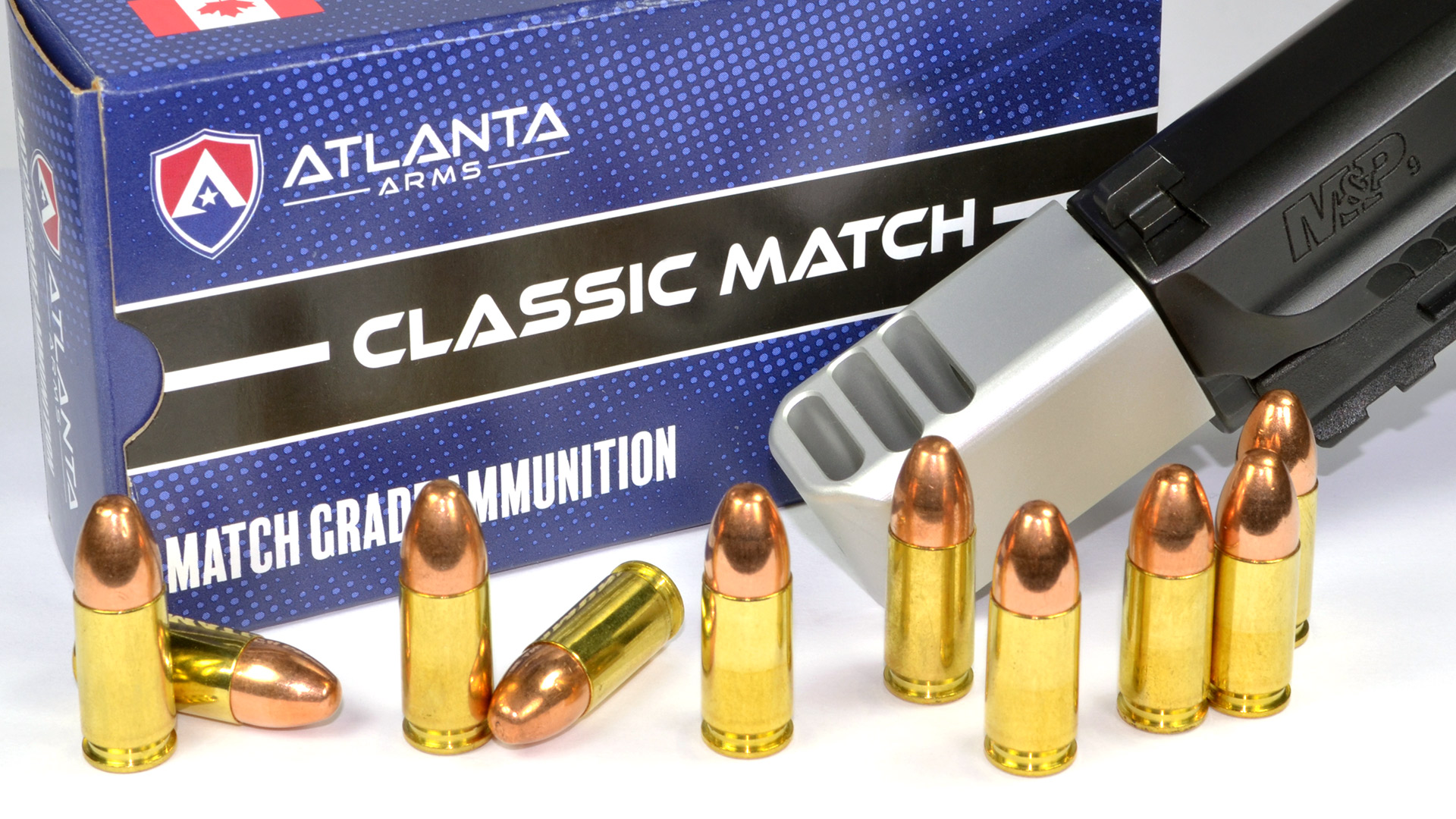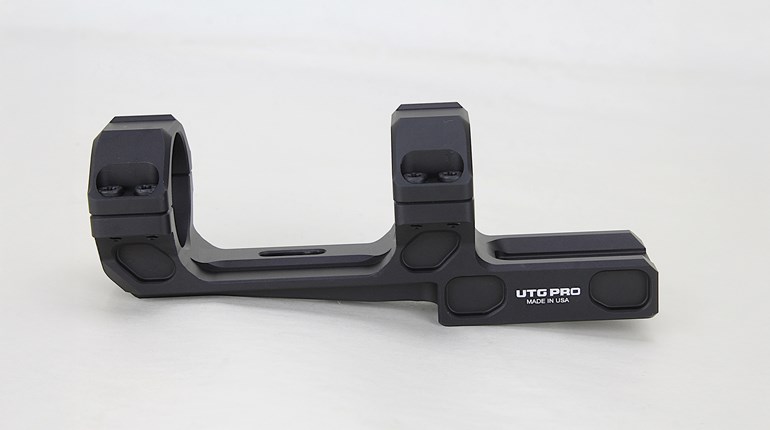
Atlanta Arms in Covington, Ga., manufactures high quality ammunition, and several of their loads are tailored to competitive shooters. This includes 9mm Luger ammunition for USPSA and IPSC competitors which must make a minimum 165 Power Factor to qualify for Major scoring in Open division. This ammunition is called 9 Major, and it’s intended for competition pistols designed to run high-pressure ammo.
Atlanta has introduced a new 9 Major load with a 147-grain full metal jacket (FMJ) bullet. Its advertised speed is 1170 +/- fps, for a Power Factor of 170; however, the company does not indicate the barrel length from which it was chronographed. This new load complements Atlanta’s other 9 Major load that sports a 147-grain JHP bullet.

Why a 147-grain bullet? Many Open division shooters use lighter bullets, such as 115- and 124- (or 125) grain bullets. A 147-grain bullet has a “softer” recoil impulse than lighter bullets, generally attributed to the heavy bullet having a slower acceleration curve, because it does not have to go as fast to reach the same Power Factor as the lighter bullets.
The advertised overall length (OAL) is 1.165 +/- 0.005 inches. Ten rounds were measured and they ranged from 1.153 to 1.165 inches. Also, one bullet was pulled. It measured 0.355 inch in diameter, 0.677-inch long and weighed 147.7 grains.
As for the powder charge, the weight was 7.0 grains. This is a lot of powder for a 147-grain bullet, but that’s a good thing. More powder means more gas and more gas pressure for a compensator. More gas pressure blasting upward from the compensator’s ports means more downward push thanks to Newton’s third law—every action (force) has an opposite and equal reaction. This helps to reduce muzzle rise which helps shooters get the sights back on target faster. Since almost everything 9 Major is intended for a gun with a compensator, a powder that uses a heavy weight is ideal.
The OAL is near the 9mm Luger’s maximum OAL of 1.169 inches. Some bullets at this length might not fit in some chambers with a short throat, because the bullet can hit the riflings before the round is fully seated in the chamber. This can jam the gun or possibly increase pressure.
I tested whether this ammunition would pass the “plunk” test in several 9mm barrels. The plunk test assesses if the loaded round fits all the way into the chamber. In order to pass, the round must fall into chamber, rotate freely, and then fall out when the barrel is inverted. If the bullet is seated too long and engages the rifling, it will stick and won’t fall out when the barrel is inverted.
These rounds passed the plunk test in some barrels, but failed in others. I used rounds with an overall length that included the 1.153 inches as the shortest and 1.165 inches as the longest. The barrels that passed the plunk test were: Glock G19 4-inch, Lone Wolf Alpha Wolf 4.6-inch for a Glock G19, two Storm Lake barrels for S&W M&P9 pistols, and a Kart 5-inch barrel that has been reamed with a Manson 9mm Luger reamer.
Barrels in which they failed the plunk test were: Lone Wolf 4-inch for a Glock G19, factory S&W M&P9 4.25-inch and an Apex Tactical 4.25-inch barrel for the S&W M&P9.
Smith & Wesson M&P 9mm barrels have a reputation for having a short throat. Other guns with reputations for short throats (that I am aware of) include CZ pistols. Shooters using factory barrels from these guns (or other guns with a reputation for short throats) are advised to try a sample of this Atlanta Arms ammo before buying in bulk.
It is my understanding that some guns built for 9 Major tend to have long or extended throats which allow the use of long OAL rounds. Check with your gunsmith to confirm this.
Accuracy was assessed in a hybrid Para Ordnance frame with a Caspian slide and 5-inch Kart barrel. Accuracy was good in my pistol. The average 5-shot group size was 1.64 inches. The average was 1174 fps, for a Power Factor of 172. None of the cases showed any evidence of over-pressure.

I also used a Storm Lake 4.96-inch threaded barrel for an M&P9. Surprisingly, the Atlanta Arms ammo was slow in this barrel. It averaged 109 fps, which is 84 fps slower than the barely longer 5-inch Kart barrel. As a result, it produced only a 160 Power Factor.

Atlanta Arms’ new 147-grain FMJ 9 Major round is accurate and reliable. The round-nose bullet should feed reliably in everything, something that can’t always be said of hollow-point bullets.
My testing showed the ammunition in my 5-inch Kart barrel slightly exceeded advertised Power Factor of 170. The lower speed through the Storm Lake barrel is a reminder that every barrel is different, and you should check its speed through your gun to make sure that it meets the required minimum Power Factor rules.
Atlanta Arms’ new 9 Major round is part of their Classic Match series. Cost for 50 rounds is $33.99. A case of 1,000 rounds is $520.99. Visit atlantaarms.com to learn more.
See more: Accuracy Of 9 Major Handloads

































